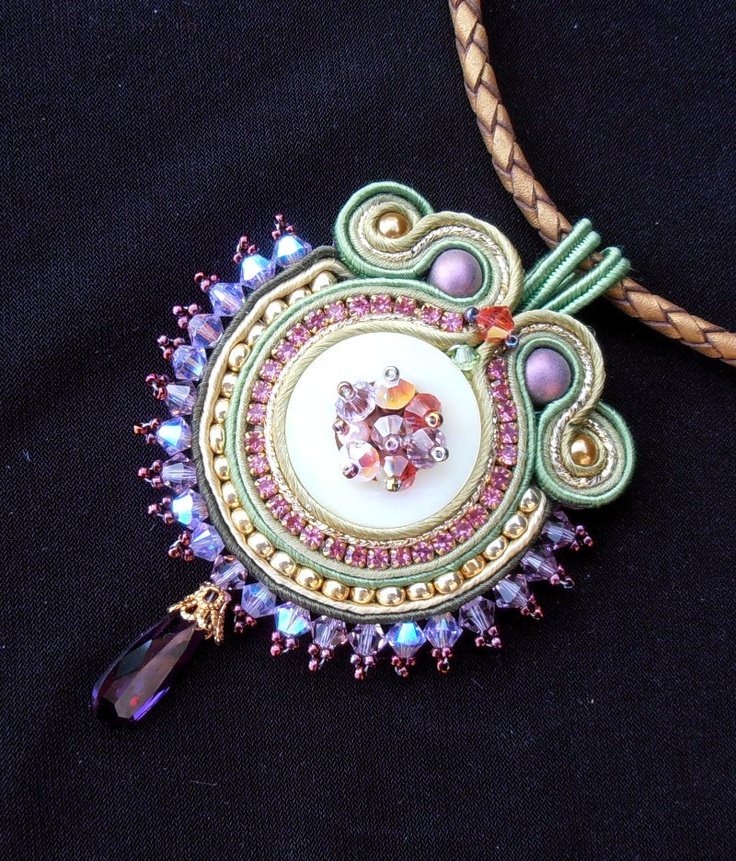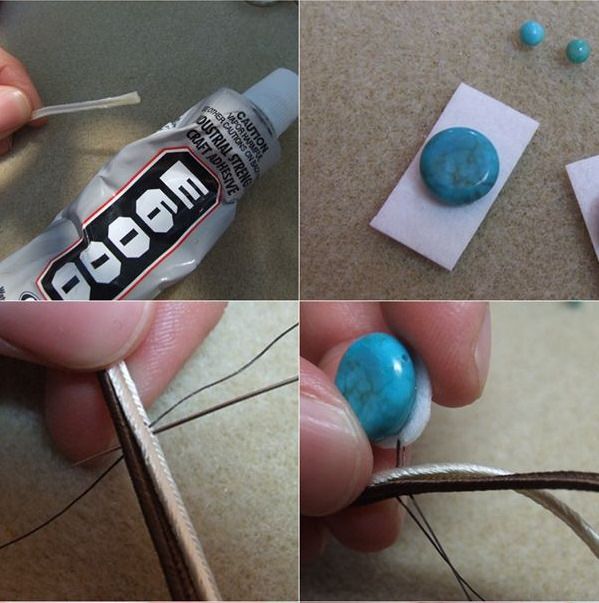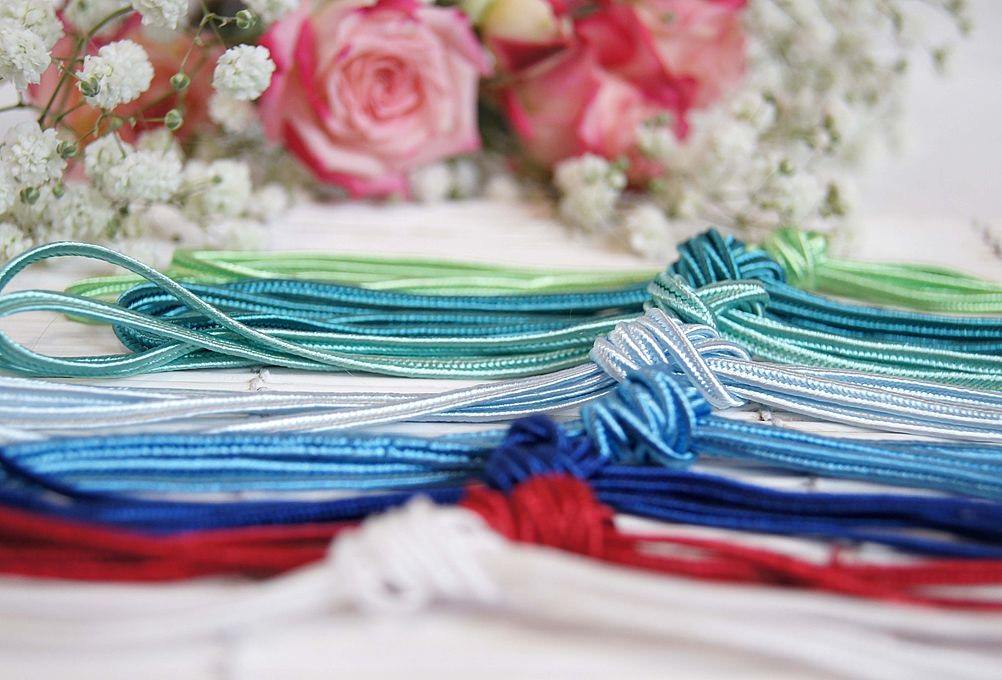Sewing embroidery decorations: photo and video master-class
Content
- Master-class on sewn embroidery brooch or pendant
- The basic techniques and rules of sewn embroidery
- Video: master-class on the damask bracelet
- Creation of jewelry in soutage technique
- Video: how to make sutured earrings
Thanks to the progress and variety of decorativeMaterials that are used to create all kinds of masterpieces, now anyone can master the most unimaginable technique of embroidery. So, from the 14th century from France came to us sewn embroidery. But similar elements were also encountered in the Slavic culture, so many art historians of the day argue about where this art came from.
Now, as before, embroidery is used forCreating a variety of decorative accessories. Such technique of embroidery is considered royal, because it was used to decorate clothes, create all sorts of elements and a variety of decor in jewelry and jewelry of important and very noble persons.
Anyone who is interested, having studied several lessons with a detailed description of the master class on southeast technicians, will be able to create with his own hands various decorations and decor for clothes or to use as jewelry.






Master-class on sewn embroidery brooch or pendant
Any creative work, before it comes to life requires a clear plan or at least a thoughtful concept.
The first stage consists of a preparatory process. First of all, we choose or create a scheme for future decoration. If possible, it is necessary to draw a product, think through every detail, elements, so that you can purchase the required materials.
The second stage is the creative process or the application in practice of the knowledge of the master class in southeast technology:

Lay out before you the elements are not yetCreated jewelry, we process the edges of the cassette strap. Some needlewomen sing at the ends, others glue with PVA glue. The novice master himself chooses the most convenient strategy for himself, which he will adhere to in his work. The main thing is that sewing embroidery, made by own hands, brings pleasure;- The next step, the sutured tape is folded together and bent in half. It is stitched in small stitches. It is necessary to lay stitches in the direction of the ends, starting from the middle;
- If the product uses cabochon, any otherA pebble or a decor element with a flat side, it is pre-attached to the lining material. When this is a precious stone, cabochon, cameo, then they are glued on the skin, felt or dense material. If the element replacing the stone has holes, it is sewn;
- Fixed kaboshon begin from the middle toCircle with a braid. Suturing tape is most often used in several layers. You can use multi-colored ribbons or monophonic type. Soutage technique allows you to develop imagination, without limiting the master in the possibilities. To create a suturing harness, you can sew it between yourself with your own hands or using a sewing machine with a special paw;
- After the cabochon sheathing, we sew the ends of the braid to each other. A kind of gap is formed between them;
- The emerging space is lined with beads, beads, in general, everything on, which pushes the master his level, class or fantasy;
- The remaining processed ends of the braid are fixed on the wrong side;
- If you use beads, then the bead rows for covering the lumens or the whole product are passed several times in order to keep them more secure;
- Tips are hiding on the wrong side. After the self-made jewelry is ready, the wrong side, so that you can not see the gross, sloppy seams and ends covered with a small piece of dense fabric or material. Lay inconspicuous seams from the wire or glue. Seams can be covered with a number of beads. If it is a brooch, cameo or other detail attached to clothing, then you can attach a pin or immediately sew it to the finished product.








This is the most simple and accessible for beginners lesson master class on southeast embroidery. If desired, everyone can overpower him if he understands the main principles of this technique.
The basic techniques and rules of sewn embroidery

Sutable cord Before starting the trialWork and teaching master classes, any beginner must understand the specific subtleties and nuances that sutazhnaya technique has. First of all, it is necessary to select the most important material - the sutured cord. He must have the flexibility, softness and satin shine. It should also be understood that not only the technique and the result of the finished product or decoration depend on the materials.
It should be understood that sewn embroidery shouldBe performed carefully, with special diligence and thoroughness. The slightest flaws, curvature in the products in such embroidery will be noticeable, and catch your eye. In order for the embroidery of this technique to be more careful, it is necessary to follow several simple rules:

In the process of trimming, it is necessary to process the tips, since the suture cord has the properties to bloom. Therefore, the tips are treated by the usual cauterization of the filament or by gluing PVA;
Video: master-class on the damask bracelet
Creation of jewelry in soutage technique
Another variant of the master class for creatingRim or other decoration with your hands on the basis of velvet fabric. This decoration can be created in Greek, Slavic or Egyptian style. Embroidery embroidery used in these products consists of the following stages:

In the second row, when moving around in circles, we add through one bead or bead. Beads of each row can differ in color or be monophonic. This is the choice and imagination of the master;

Beading braiding 
Beading braiding 
Beading braiding Next step isCreating a bandage with your own hands. It is made to the width that corresponds to the chosen style. As practice has shown, sewing embroidery perfectly harmonizes with any materials, therefore as a basis of a rim or necklaces it is possible to choose from soft fabrics up to various metals. A small piece of material should complement the size of the embroidered element and match the size of the head.

If the material is fabric, then two strips of non-woven fabricFasten with a heated iron. We glue or carefully sew suturing strips of braid, connected together. The stitches with which we sew the braid to the rim can be easily hidden between the beaded rows.
The ends of the braids are hidden behind the central element on the wrong side. They are sewn additionally for the fortress.
The fabric for the rim should be folded in half toIts edges hid inside, and in the middle could pass an elastic band, thanks to which this headpiece will hold. Under the main element, the ends of threads, ribbons and unwanted handmade elements are hidden. When the work is done, the flaws are covered with additional material of the same fabric as the bezel, and then fixing stitches are laid.
To cover the stitches on the front side, you canLay a special thin ribbon, which will correspond to the thematic direction of the finished jewelry. The type of garment or jewelry, jewelry ornaments depends on the planned projects, which, according to the technique of execution, embody the whole essence and grandiosity of the embroidered embroidery.
Sewing embroidery in its execution andTechnical complexity for beginners does not pose any particular problems. The main thing is to really calculate your strengths, to choose what really is possible at the first stages of mastery. For many, training in the lessons of masters of a certain class can give a significant impetus to growth and creative development. Therefore, having mastered the seemingly uneasy technique at first, the former student will not notice how she will become a first-class master who can already give herself advice and conduct her own master classes for other inexperienced beginners.
Video: how to make sutured earrings




